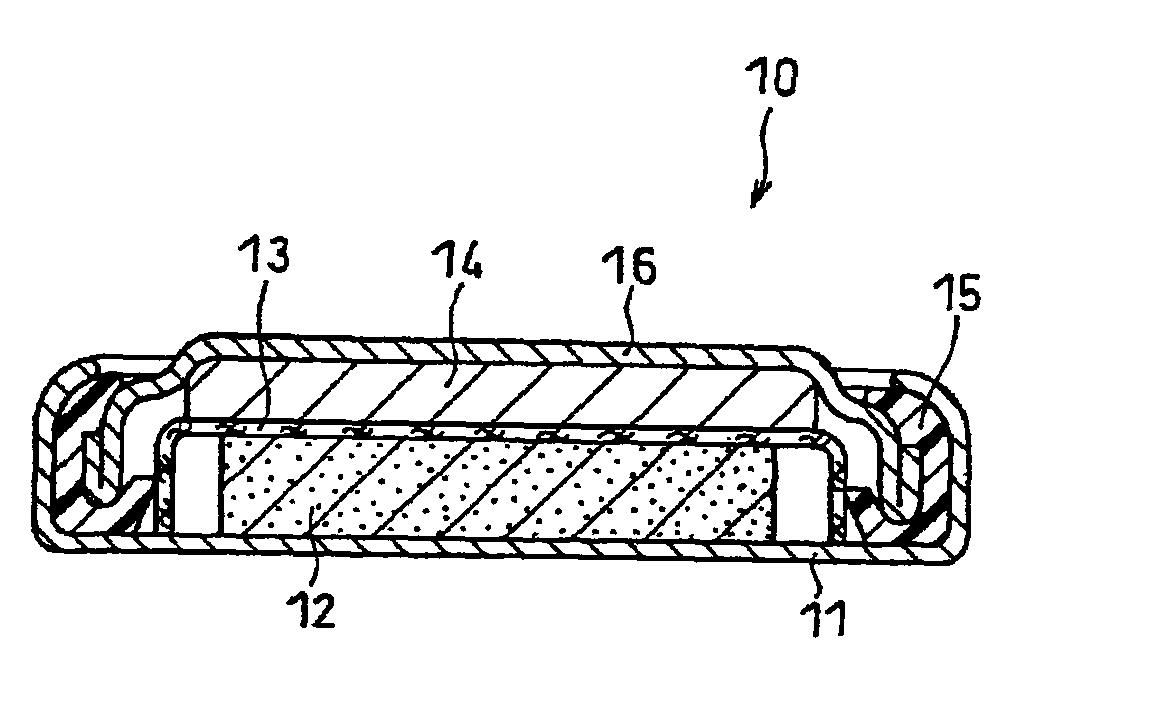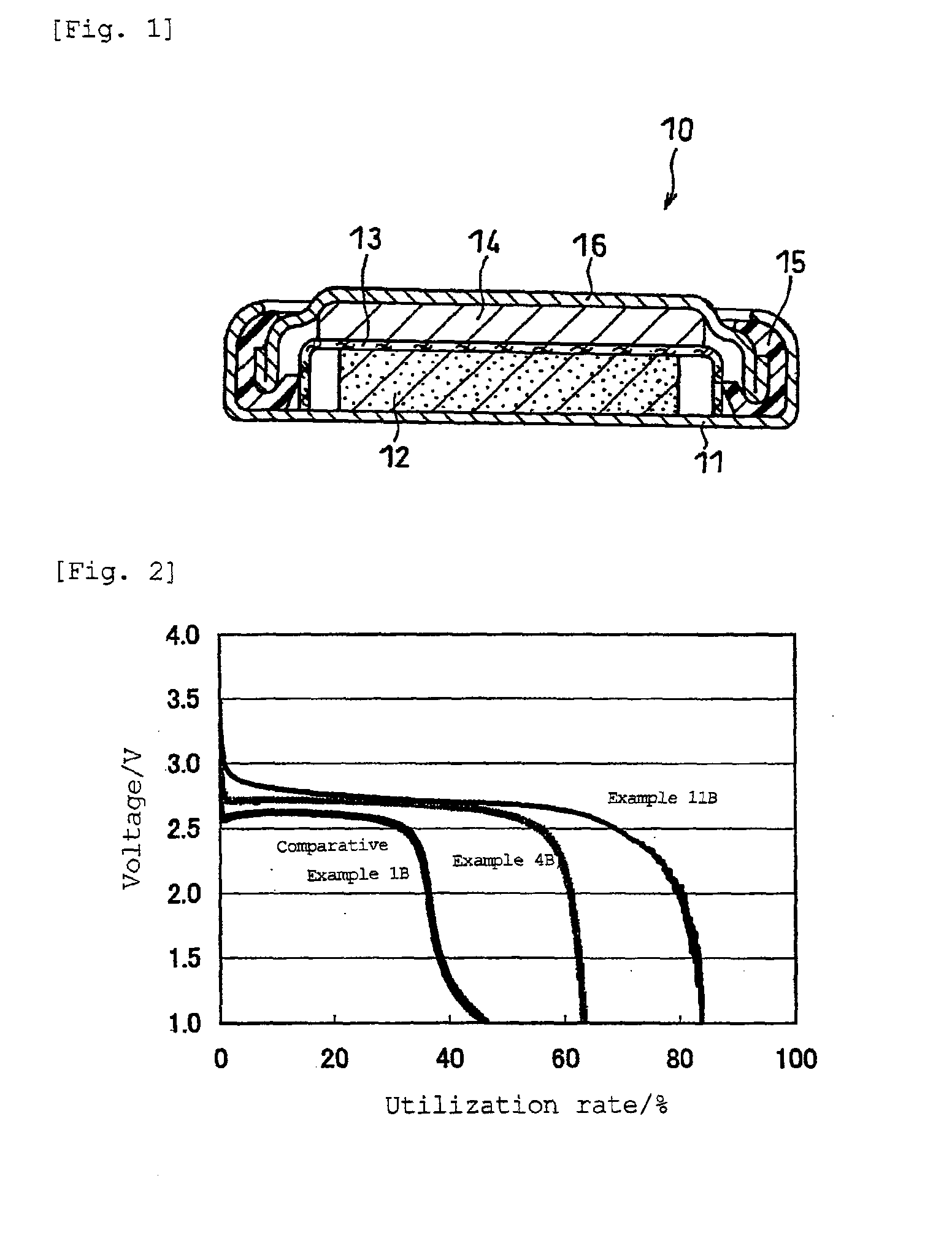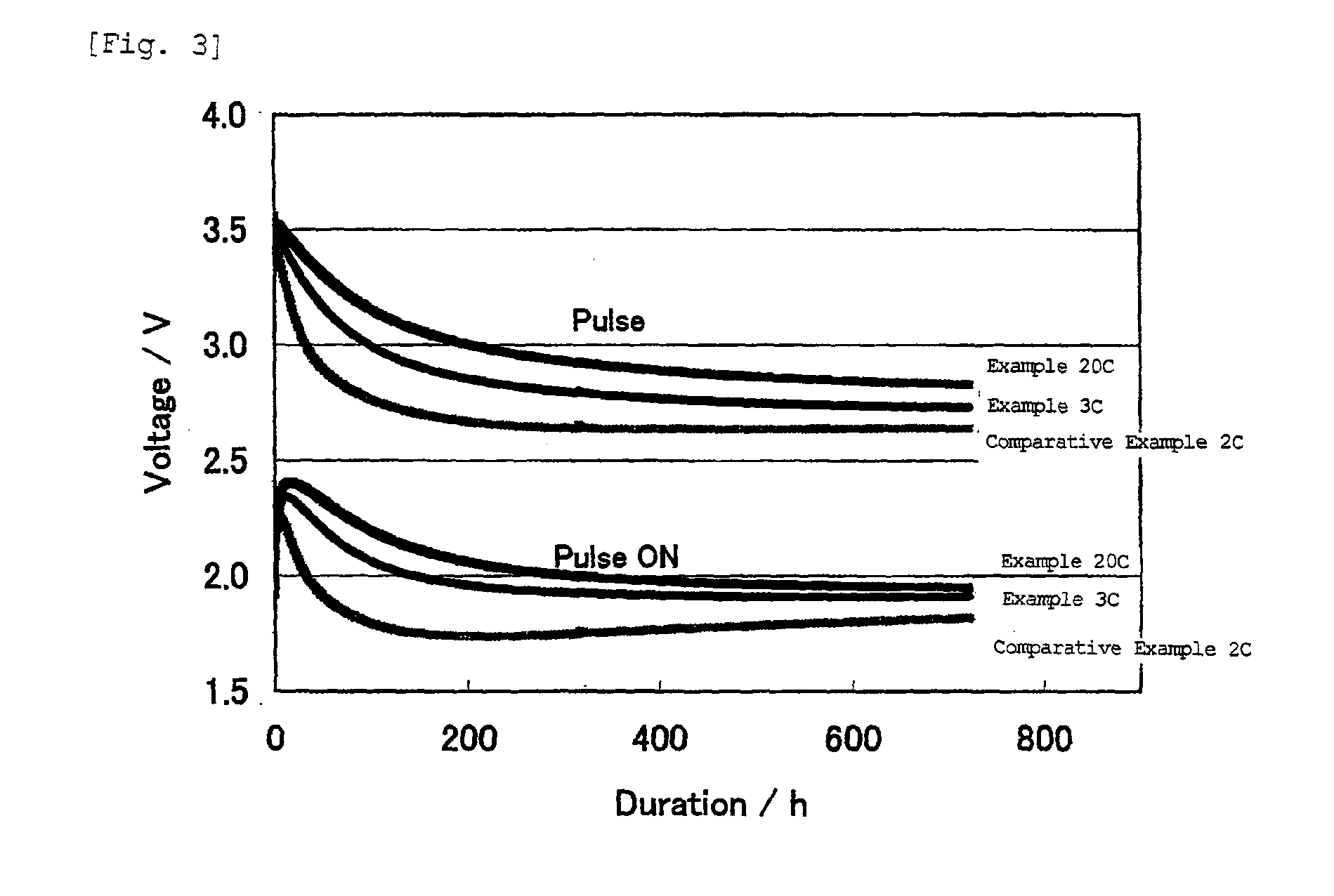Non-aqueous electrolyte battery
a technology of electrolyte battery and discharge rate, which is applied in the direction of non-aqueous electrolyte cells, cell components, electrochemical generators, etc., can solve the problems of poor discharge rate characteristics, insufficient high-temperature characteristics, and excellent load characteristics of low-temperature cr batteries, etc., to achieve excellent discharge characteristics, excellent discharge characteristics, and fluorinated graphite surface conductivity improvement
- Summary
- Abstract
- Description
- Claims
- Application Information
AI Technical Summary
Benefits of technology
Problems solved by technology
Method used
Image
Examples
example 1a
(1) Preparation of Positive Electrode Active Material
[0100]A petroleum coke having a particle diameter D50 of 20 μm was heated in a fluorine gas atmosphere, to give a second fluorinated graphite (CF1.15)n having a degree of surface fluorination of 1.8. The reaction conditions were such that the pressure of the fluorine gas was 0.5 atm (5.07×104 Pa), the heating temperature was 400° C., and the reaction duration was 12 hours.
[0101]The second fluorinated graphite (D50: 20 μm) was mixed with ethanol at a ratio of 20:80 by weight, to disperse the fluorinated graphite in the ethanol. The resultant mixture was irradiated with ultraviolet rays for 5 minutes using a low-pressure mercury lamp UL0-6DQ available from Ushio Inc. as an irradiation source, to cause some carbon-fluorine bonds on the second fluorinated graphite surface to rupture. In such a manner, fluorinated graphite (CF1.15)n (a first fluorinated graphite) having a degree of surface fluorination of 1.79 serving as the positive e...
example 2a
[0113]The duration of the ultraviolet irradiation on the (CF1.15)n having a degree of surface fluorination of 1.80 performed in Example 1A was changed to 20 minutes, to give a first fluorinated graphite (CF1.15)n having a degree of surface fluorination of 1.70. A battery of Example 2A was fabricated in the same manner as in Example 1A, except that the first fluorinated graphite thus obtained was used.
example 3a
[0114]The duration of the ultraviolet irradiation on the (CF1.15)n having a degree of surface fluorination of 1.80 performed in Example 1A was changed to 1 hour, to give a first fluorinated graphite (CF1.15)n having a degree of surface fluorination of 1.30. A battery of Example 3A was fabricated in the same manner as in Example 1A, except that the first fluorinated graphite thus obtained was used.
PUM
| Property | Measurement | Unit |
|---|---|---|
| particle size distribution | aaaaa | aaaaa |
| volume fraction | aaaaa | aaaaa |
| particle size distribution | aaaaa | aaaaa |
Abstract
Description
Claims
Application Information
 Login to View More
Login to View More - R&D
- Intellectual Property
- Life Sciences
- Materials
- Tech Scout
- Unparalleled Data Quality
- Higher Quality Content
- 60% Fewer Hallucinations
Browse by: Latest US Patents, China's latest patents, Technical Efficacy Thesaurus, Application Domain, Technology Topic, Popular Technical Reports.
© 2025 PatSnap. All rights reserved.Legal|Privacy policy|Modern Slavery Act Transparency Statement|Sitemap|About US| Contact US: help@patsnap.com



